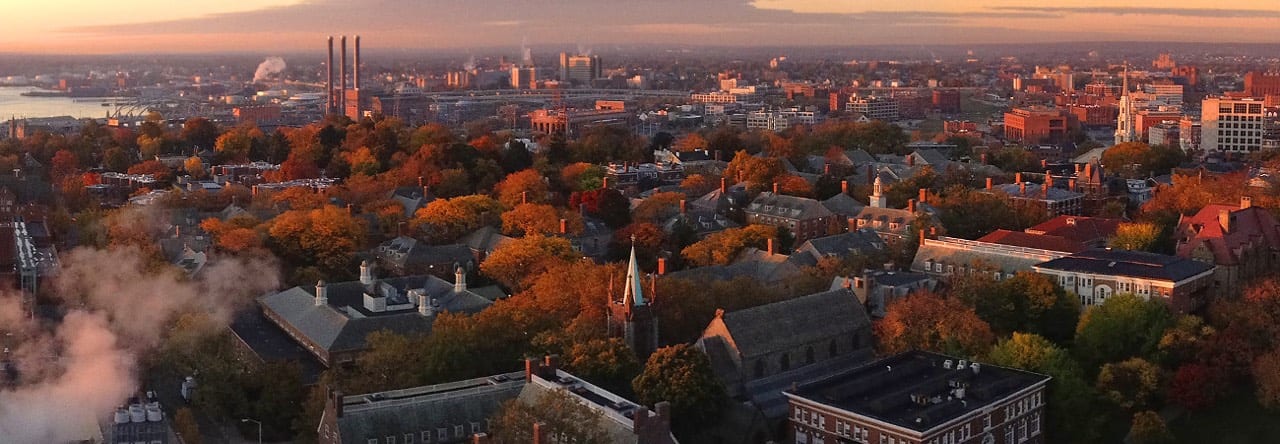By Jasper Clayton and Olivia Golubowski
Hi everyone! We’re Jasper and Olivia, and for our ARCH 1170: Community Archaeology in Providence and Beyond final project, we’re working on Stories From the Steel Yard: An Exploration of the Steel Yard’s Found Material Culture. Our project is a collaboration with the Steel Yard, an industrial arts collective located at 27 Sims Ave in Providence, RI. The Steel Yard currently offers a wealth of artistic programming, including courses and residencies in arts such as welding, blacksmithing, jewelry-making, and ceramics, and is located on the former property of Providence Steel & Iron Company’s manufacturing facilities. During renovations to the site, a wide array of artifacts ranging from glass bottles to animal bones were recovered. Our project focuses on analyzing and interpreting these artifacts in order to create a more comprehensive history of the site, and to illustrate the continuity in its use over time.
So far, the bulk of our work for the project has consisted of artifact cleaning, cataloging, and analysis. Cleaning is perhaps the simplest, but also the most time-consuming portion of the process– each artifact needs to be carefully hand-cleaned to take off layers of dust and dirt and to make any unique features more easily visible. For ceramics, like a broken teacup, or glass, like an old bottle, cleaning can be done just with water and a toothbrush, whereas for any metal objects, like nails, a wire brush is used to scrape off the outer layers of rust without damaging the metal underneath. Once everything is cleaned, we can catalog our artifacts by taking pictures of each object and recording some basic biographical information (for example, color, size, whether the object is complete or fragmentary, if there’s any writing/images on the object, etc). This is the information we use when conducting research to discover any additional information about our artifacts. Our goal is for this information to act as a baseline so that further research of these artifacts and their placement within the history of the Steel Yard or larger Providence can be easily accessible.
Take for example the small jar below, which is just one of many intact vessels in the Steel Yard’s collection. The photos below show the jar after thorough scrubbing with water and a toothbrush, at which point the writing around the neck of the jar, reading “MELLIN’S FOOD FREE SAMPLE” is clearly visible. After recording this and much more information for this artifact, we began our research with a simple Google Search for Mellin’s Food– and in this case, it was very easy to find out just what this jar was once used for. Only a bit of research led us to many similar Mellin’s Food Free Sample jars and digging further brought us to the history of Mellin’s Food Company, a Boston-based company that produced formula-like food for infants from 1866 onwards. The 1904 advertisement below even openly advertises the free sample policy of Mellin’s Food. While in this case, finding our artifact’s origin wasn’t too difficult, there are definitely still questions– not the least among them being what a free sample jar for baby food is doing at an industrial production site! Puzzling over questions like these and attempting to forge possible explanations (perhaps a family in the area requested a sample for their baby, and then re-purposed the jar for Dad to take to work at Providence Steel & Iron?) is one of the most intriguing and creative aspects of archaeology.
Many other of the jars and bottles in the Steel Yard feature other engravings and writings referencing production within Providence. Bottles feature inscriptions such as “UNION BOTTLE CO. 43-45 ARTHUR AVE PROVIDENCE RI”, “W.C. Viall QUALITY PRODUCTS EAST PROVIDENCE R.I. ” and “SCOTT’S EMULSION COD LIVER OIL,” the latter still being manufactured today. Other objects and bottles possess features such as rounded bottoms (to maintain carbonation) characteristics now considered obsolete due to modern manufacturing technologies. These many inscriptions, labelings, and advertisements will greatly aid in further investigation of the objects in the Steel Yards collection.
Our hope is that we will be able to further build upon this research to further contextualize these objects constructing a history of people moving through the Steel Yard and surrounding area. We hope to make this information available so that others may have access to these fascinating objects either through digital or in-person format, such as an exhibit during the fall of 2022. These objects display the multi-faceted and interesting history of the Steel Yard; we hope that through our cataloging and examination we can display it effectively through the variety and captivating aspects of its material culture.
You can check out the Steel Yard’s website to see some of the amazing work they do: https://www.thesteelyard.org/





